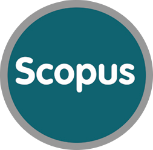Cognitive Cloud Computing: Harnessing AI to Enable Proactive Fault Prediction and Resource Allocation in Complex Cloud Systems
Keywords:
Cognitive Cloud Computing, Artificial Intelligence (AI), Proactive Fault Prediction, Resource Allocation, Cloud SystemsAbstract
Cognitive cloud computing represents a paradigm shift in the management of cloud systems, leveraging artificial intelligence (AI) to enhance operational efficiency and reliability. This research article explores integrating AI techniques in proactive fault prediction and resource allocation within complex cloud environments. Traditional cloud computing faces significant challenges, including unpredictable faults and inefficient resource utilization, leading to performance degradation and increased operational costs. By employing cognitive computing principles, this study aims to identify and implement advanced AI methodologies, such as machine learning and predictive analytics, to predict potential failures before they occur and optimize resource allocation dynamically. Through a comprehensive literature review and analysis of case studies, the article highlights successful implementations of these techniques, discusses the implications for cloud service providers, and outlines future research directions in this emerging field. The findings underscore the potential of cognitive cloud computing to transform cloud management by enabling proactive decision-making and enhancing overall system resilience.
References
• K, A. (2022, April 3). CLOUD COMPUTING: ORIGIN, DEFINITION, TYPES, FEATURES, FUTURE PROSPECT. https://www.linkedin.com/pulse/cloud-computing-origin-definition-types-features-future-kumar/
• 3 Cloud Computing Trends To Watch Out For In 2022 | i2k2 Networks. (2022, March 28). Dedicated Web Hosting | Cloud Hosting | Data Center Services. https://www.i2k2.com/blog/3-cloud-computing-trends-to-watch-out-for-in-2022/
• Bansal, D. (2018, April 14). Introduction to Cognitive Computing. https://www.linkedin.com/pulse/introduction-cognitive-computing-deepak-bansal/
• Shetty, A. (2022, January 11). Cloud Computing Architecture: An Overview. clairvoyant. http://www.clairvoyant.ai/blog/cloud-computing-architecture-an-overview
• What is Resource Allocation? Importance, benefits & Challenges. (n.d.). https://www.eresourcescheduler.com/blog/what-is-resource-allocation-and-why-it-is-important
• IBM. (2021). *Predictive maintenance powered by Watson*. Retrieved from https://www.ibm.com/watson/iot/predictive-maintenance
• Elemam, S. M. (2018). Pragmatic Competence and the Challenge of Speech Expression and Precision (Master's thesis, University of Dayton).
• Kothandapani, H. P. (2020). Application of machine learning for predicting us bank deposit growth: A univariate and multivariate analysis of temporal dependencies and macroeconomic interrelationships. Journal of Empirical Social Science Studies, 4(1), 1-20.
• Kothandapani, H. P. (2019). Drivers and barriers of adopting interactive dashboard reporting in the finance sector: an empirical investigation. Reviews of Contemporary Business Analytics, 2(1), 45-70.
• Kothandapani, H. P. (2021). A benchmarking and comparative analysis of python libraries for data cleaning: Evaluating accuracy, processing efficiency, and usability across diverse datasets. Eigenpub Review of Science and Technology, 5(1), 16-33.
• Rahman, M.A., Butcher, C. & Chen, Z. Void evolution and coalescence in porous ductile materials in simple shear. Int J Fracture, 177, 129–139 (2012). https://doi.org/10.1007/s10704-012-9759-2
• Rahman, M. A. (2012). Influence of simple shear and void clustering on void coalescence. University of New Brunswick, NB, Canada. https://unbscholar.lib.unb.ca/items/659cc6b8-bee6-4c20-a801-1d854e67ec48
• Alam, H., & De, A., & Mishra, L. N. (2015). Spring, Hibernate, Data Modeling, REST and TDD: Agile Java design and development (Vol. 1)
• Al Bashar, M., Taher, A., & Johura, F. T. (2019). QUALITY CONTROL AND PROCESS IMPROVEMENT IN MODERN PAINT INDUSTRY.
Downloads
Published
How to Cite
Issue
Section
License
Copyright (c) 2022 Well Testing Journal

This work is licensed under a Creative Commons Attribution-NonCommercial 4.0 International License.
This license requires that re-users give credit to the creator. It allows re-users to distribute, remix, adapt, and build upon the material in any medium or format, for noncommercial purposes only.

